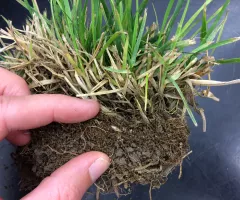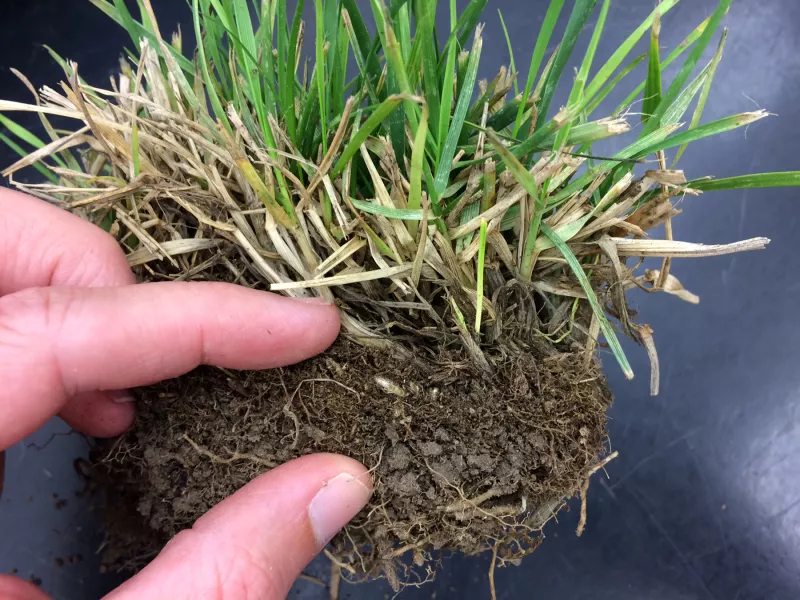Do You Have a Thatch Problem?
What is thatch?
Thatch is a layer of roots, shoots and stems, both living and dead. This brown mat develops between the green vegetation and the topsoil.
How does thatch develop?
Your lawn is a living system. It produces organic matter (grass blades, stems and crowns) at the same time it decomposes organic matter. When your lawn produces more organic matter than what it can decompose, thatch starts to build up.
How much thatch should I have?
A thin layer is good. It insulates the lawn from temperature and moisture extremes. A little thatch makes the lawn more resilient.
A thick layer is bad. When thatch gets to be 1 inch thick, it makes roots more susceptible to drought, diseases and rot.
How do I measure thatch?
Cut a wedge out of your turf. Pretend you are cutting a piece of pie and go down, 2 inches into the soil. Pull out the wedge. Measure the mat’s thickness.



